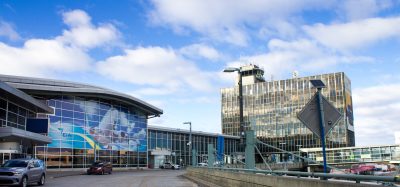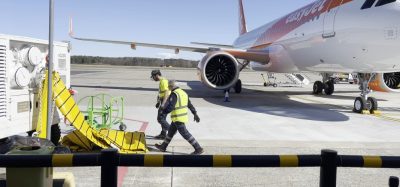Airport staff investment: The key to collaborative working
- Like
- Digg
- Del
- Tumblr
- VKontakte
- Buffer
- Love This
- Odnoklassniki
- Meneame
- Blogger
- Amazon
- Yahoo Mail
- Gmail
- AOL
- Newsvine
- HackerNews
- Evernote
- MySpace
- Mail.ru
- Viadeo
- Line
- Comments
- Yummly
- SMS
- Viber
- Telegram
- Subscribe
- Skype
- Facebook Messenger
- Kakao
- LiveJournal
- Yammer
- Edgar
- Fintel
- Mix
- Instapaper
- Copy Link
Posted: 8 December 2014 | Dimitrios Sanos, IATA
In order to minimise risks associated with the human factor, and to improve the performance of operations, airports and ground handlers should invest smartly in training, says Dimitrios Sanos, Product Manager, Airport and Ground Operations Training at IATA.


Our industry celebrated 100 years of commercial air travel in 2014. When recalling the amazing story of the first scheduled commercial flight in Florida in 1914, and seeing the rare photos showing aircraft about to depart for flights in our industry’s infant years, it is interesting to observe that besides aircraft and passenger fashion, many areas of the industry have drastically changed since then.
Nowadays 50,000 routes around the world are connected by air, and airports accommodate all that traffic with safety and efficiency. The narrow strips of trimmed grass have become a complex of concrete runways with advanced technology systems; enough to accommodate the safe transportation of more than three billion passengers and 50 million tonnes of cargo each year.
The modern miracle of commercial aviation is supported by airport infrastructure and operations. The aviation industry is a safer transportation system than any other and this is down to collaborative work from aircraft manufacturers, air traffic control staff, flight crews and airport systems and operations staff. The human factor is common in all of the parts of the air transport system, especially in airfield operations, where people select, install, maintain and operate the equipment and people perform the necessary functions to aid the arrival, servicing and departure of aircraft. It is commonly accepted that in order to minimise human factor risks and improve performance, companies should ensure their staff have a good level of experience, risk awareness and training. There are a lot of discussions in the media and at aviation events about the issues of safety, human factors and training, but we operate in an industry that shows very low profit margins and high sensitivity to changes in the economic and geopolitical environment, so it is unrealistic to approach the two topics of safety and business profitability separately. It should be an automatic process to think about all the points when managers are about to make a decision and when they design their operations.
IATA’s targets and priorities for serving the industry can be summarised as working towards a safe, secure, and efficient industry that is sustainable both environmentally and economically. This is a continuing process at multiple levels and fields of our industry, and addresses issues ranging from safety and security to environmental sustainability, innovation and infrastructure. All IATA’s activities are driven by these strategic priorities because this is what aviation companies need in order to drive their business. The training programmes we develop are equally aimed at addressing these strategic priorities.
One of the most effective solutions to reduce the risk of the human factor in safety is training. Although this is widely accepted, it is also true that when cost reductions must be made, the first thing to be reduced is often the training budget. Although training is sometimes seen as a necessity for operations and compliance, it should really be regarded as an investment and solution for many issues. Training must be relevant, meaningful and realistic; keeping a focus on multiple operations and business requirements at the same time. For example many companies suffer from a high staff turnover in areas of airport operations, ground operations and ground handling. If we wish to retain knowledge and keep the skills within our companies and our industry, airports and ground service providers need to motivate staff, show them their effort is recognised, and let them know that they can grow professionally following appropriate training and gaining necessary skills for their job. Aviation is still attractive for high profile jobs and glamorous concept of air travel, but I cannot see any glamour in working on a night shift, during holiday season, doing work at the apron in -5°C or under the summer sun in +45°C. It is a tough and demanding job.
Another important element that can affect the performance of tasks airside is the complexity of procedures. Several decades ago the operational environment was much simpler: fewer international airports, a smaller number of airlines, and fewer aircraft types. At the apron of an airport at any given time we may see several different airlines operating with different aircraft types. In many cases there are different priorities, service requirements and procedures. This can be confusing for apron staff and adds complexity as well as pressure. For several decades now IATA’s Airport Handling Manual (AHM) has promoted the standardisation of ground handling services.
Through this manual – which is now in its 35th edition – airlines, aircraft manufacturers and ground service providers agree on the proper procedures for aircraft servicing on the ground. In practical terms, the AHM shows ‘what’ has to be done during ground operations and since 2011, IATA’s Ground Operations Manual (GOM) has shown ‘how’ each service has to be performed. Even within the complex environment of operations on the ground there must be a consistent way of performing some of the services.
Historically, each airline has issued its own GOM to show service providers how to perform each task. However, since IATA’s Standard Ground Handling Agreement is used by the vast majority of airlines to outsource the ground services at each location, ground handlers must – by default – follow the procedures as shown in each airline’s GOM. There may be several services that can be done differently according to each airline’s expectations, but there are a certain number of services that can be performed in the same manner at a satisfactory level for all airlines. In big stations, it is common for each ground handler to have 20-30 airline customers, and on any given shift a worker can provide services for up to five different aircraft operated by different airlines. Therefore, creating tools that promote safety, consistency and simplicity is one of the best ways of protection within a complex environment like the airport apron. That way, workers have fewer procedures to memorise and are better prepared and trained to meet all the required safety and service standards.
In key areas like airfield operations, training is essential to form a strong workplace culture. It is necessary to establish and promote a safety and customer service ethos, and at the same time explain the requirements for a sustainable business. The ethos should be ‘show how and explain why’ – it’s not enough to show staff what to do and how to perform their tasks. They also need to know the reason. This is the same principle as speeding on a motorway. Drivers must respect the limits, not because there are police radar nearby but because they are aware of the risks and the consequences of speeding.
We must keep passengers, aircraft and staff safe in the air and on the ground, but at the same time we should understand that modern airports are business entities that are looking to grow and enhance their operations and services.
Lastly, it is important to invest smartly in training. There is always a risk of losing focus, which will impact on the effectiveness of training solutions. Sometimes there is a blurry area between the topics that someone ‘must know’ in order to perform tasks efficiently and ‘good to know’ topics. While there is often great value in being familiar with topics adjacent to the job, when there are limited resources, it is better to prioritise carefully to reduce the risk of unnecessary investment. In the area of ground operations, making best use of the work done for the AHM and GOM, we are in the early stages of defining the minimum training requirements for each function. The goal is to provide a clear guide to all apron staff about what they have to know in order to perform each task. We already know that multi-tasking is an important element in efficiency, so employees often perform more than one specialised task. Using this new training approach, in each case staff will be able to verify whether their skills are up to the required level to operate safety and efficiently.
Biography
Dimitrios Sanos is Product Manager, Airport and Ground Operations Training at IATA. He joined IATA in 2010 and currently manages training programmes for the Airport, Passenger, Cargo and Security (APCS) Division and Training & Development Institute of IATA. His primary role is to monitor training activities in his area of expertise, develop new training courses and enhance existing faculty membership worldwide. He also manages global market research analysis to cover the training needs of airlines, airports and ground service providers. Dimitrios has a Master’s Degree in Airport Planning and Management from Loughborough University and a Master’s in Business Administration from the University of Kent. He has followed an Executive Education Short Course at Harvard Business School in the area of Strategic Marketing and, prior to joining IATA, worked in the airline and ground handling sector in Greece in different operational and management positions.

















